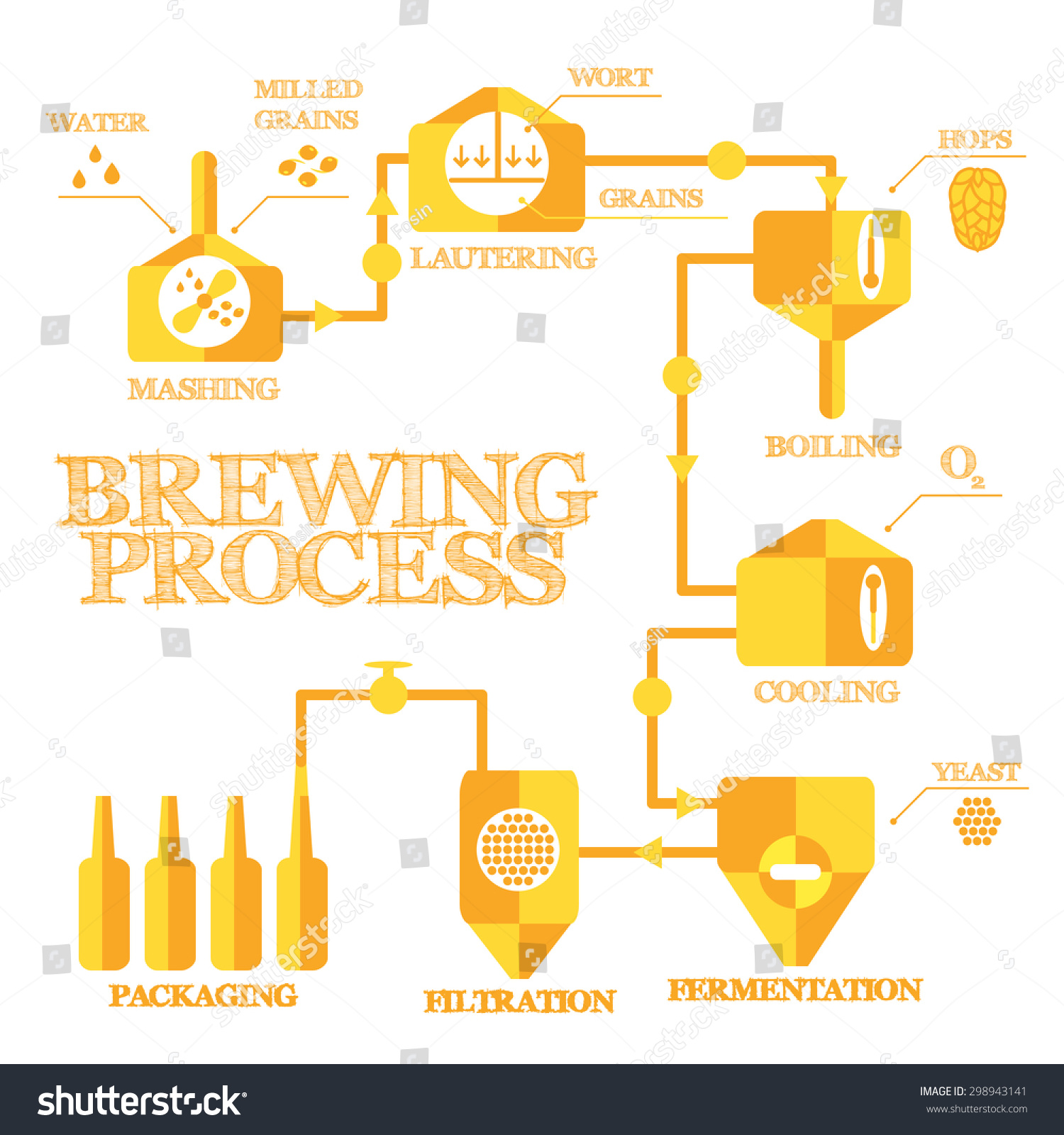
Beer Brewing Process Malting Raw barley is heated and dried with the crushing of the grain. Brewing is a complex fermentation process.

Mashing is the process of combining the grist and water also known as liquor and heating it to temperatures usually between 100.
Steps to brewing beer. Transfer your beer. Siphon the beer out of your fermenter and into your bottling bucket. Leave as much sediment in the fermenter as possible.
Attach bottle filler to hose and hose to bottling bucket spigot. Open the bottling bucket spigot and. Yeast is the secret to turning a brew into beer.
Yeast is a living microorganism that will metabolize the sugars from the grains and creates alcohol and carbon dioxide. The process of the yeast metabolization is what will turn wort the liquid extracted from the mashing process into beer. After fermentation the young green beer needs to be matured in order to allow both a full development of flavors and a smooth finish.
Filtration carbonation and cellaring After reaching its full potential the beer is filtered carbonated and transferred to the bright beer tank where it goes through a cellaring process that takes 3-4 weeks to complete. The fourth step in the production of beer is lautering. The mash is filtered in the lauter tun as the husks sink and the wort is separated from the solid substances spent grains.
The wort is then further used in the brewing process whereas the spent grains are generally used as cattle fodder. The Start of the Brewing Process Brewing beer involves liquid transfer at both hot and cold temperatures. The transferring of liquid at these different temperatures is known as hot process and cold process At the beginning of this process mash wort or.
Once the beer gets into the keg seal it with the lid. Next connect the carbon dioxide supply to the keg. You can do this by attaching the quick-disconnect to the gas-in valve of the keg.
Once the pressure releases to the keg you will hear a hissing sound. Carbonate the beer forcefully by compelling the keg with carbon dioxide gas. Then regulate the carbonating pressure to carbonate the beer.
Beer Brewing Process Malting Raw barley is heated and dried with the crushing of the grain. The aim of malting is to isolate the enzymes needed for brewing. The barley grains are then passed through grist mills to form grits.
The first step in the beer-making process is mashing in which the grist or milled malt is transferred to the mash tun. Mashing is the process of combining the grist and water also known as liquor and heating it to temperatures usually between 100. Experiment with dry-hopping for different aromas change the yeast for a more estery beer ferment at lower temperatures for a cleaner brew.
The choice is yours. And for those of us who are partial to a nice pint of scrumpy Turbo Cider is possibly the drink for you. Brewing is a complex fermentation process.
It differs from other industrial fermentation because flavor aroma clarity color foam production foam stability and percentage of alcohol are the factors associated with finished product. Steps involved in beer production are. Beer is produced from barley grains.
I bought Brewing Beer 4 Simple Steps about a week ago this for my husband who used to enjoy brewing his own beer. When we moved house a few years ago the equipment never got unpacked and it seemed easier just to go down to the bottle shop and buy a carton although he always says it doesnt taste as good. Well Im pleased to say that these Brewing Beer tips have re-ignited his enthusiasm.
Follow these simple steps. Combine a few drops of dishwashing liquid molasses ammonia liquid lawn food and a can of beer. Use a hose sprayer to sprinkle the mixture over your lawn.
Apply regularly especially over summer to green your landscape fast.